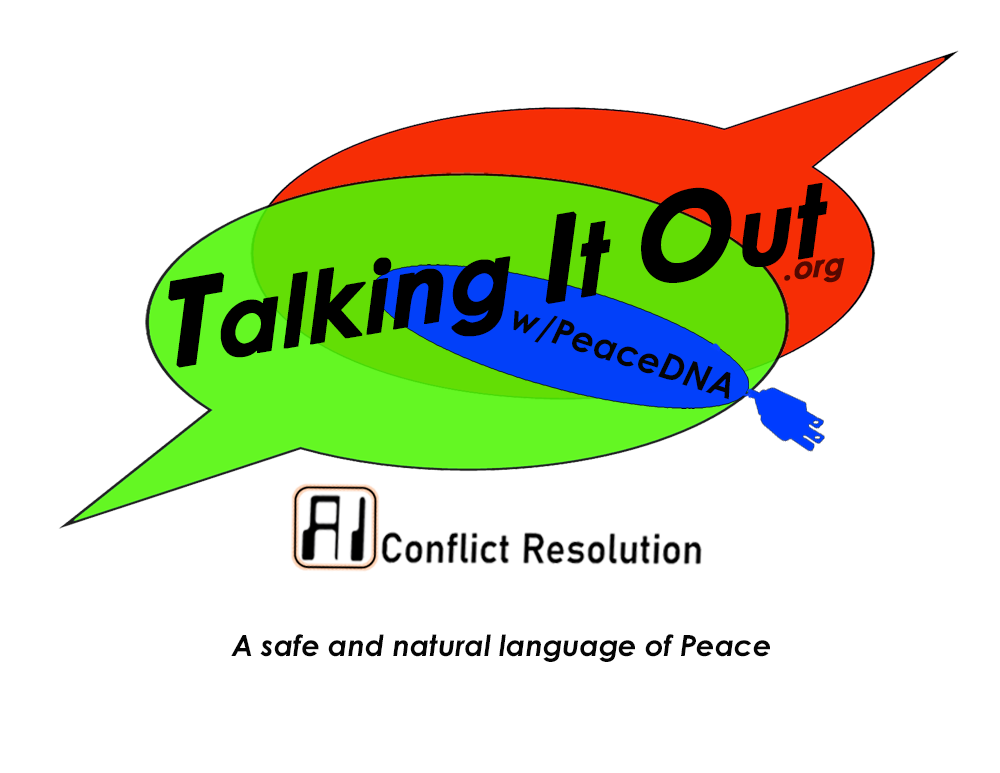
%PeaceDNA is like a human software app written by AI for the purpose of helping people understand and promote peace and conflict resolution. With just the simple knowledge needed to navigate person-to-person conflict (P2PConflict) to a peace agreement, confidence and willingness will develop. Whether for yourself or for helping two others (street mediation), the 3 steps are the same; Conditions, POV Positions, & Remedy. Additionally, to help get through the rougher moments, PeaceDNA provides 2 simple ‘plug-ins’ to respectfully handle disrespectful language (FOULs) directed either towards yourself or between others. Knowledge is power.
PeaceDNA is simplistic yet still comprehensive because it describes any P2PConflict with the minimum required components fit within a ‘big picture’ view. It plainly shows what’s what and how things work together (or not) from beginning to end with only an almost instant mental glance at the PeaceDNA strand. It’s as practical and natural as it is understandable and useful, either just in part or in whole, and not just for yourself but for others.
You can choose to become a PeaceDNA Ambassador for your community by utilizing the free resources accessed below. You can take the lead by gathering and organizing small church groups, after-school groups, and even corporate retreat groups to watch short (:05) YouTube videos. After each video, you facilitate group discussions using debrief questions (suggested). People of all ages will benefit from learning PeaceDNA. As always, there is no cost or obligation. All resources linked below are free. Just pay it forward. Thank you!
PeaceDNA Between Others (Street mediation)
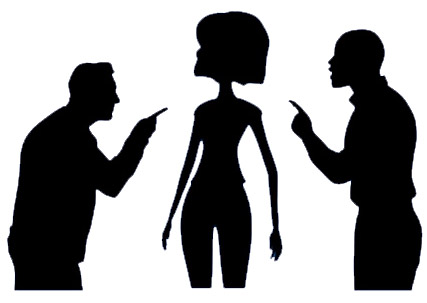
Summary
Learn how to help others willing to try the 3 Steps in PeaceDNA by answering the 6 simple GQ’s asked by you (the mediator) using any words you choose. From beginning to end, the PeaceDNA sets the Conditions, explores the required elements of Point-of-View (POV Positions) and, after each completed POV is affirmed with a Rephrase Question (“Yes”), asks for Remedy.
To respectfully challenge and eliminate distractions such as verbal FOULs (disrespectful or aggressive type words), the 1st Step GQ sets Conditions by finding: “Are you ready an willing to solve this conflict peacefully?”. The out loud agreement (“Yes”) is the bind used to keep things moving through adversity. Using their own spoken agreement (“Yes”) is part of the FOUL Control Skills set. Any FOUL, at anytime stops the process immediately focusing back on GQ 1; Are they still willing?
Skills Set
- Respectfully holding a person to their own “Yes” agreement as the Step 1- Conditions GQ. This means 100% honesty & no FOULs (disrespectful words).
- KANJI (Japanese symbol groupings) for ‘Listening’ shows more then just your ears but also your eyes, your attention, your heart and your mind.
- Rephrasing for “Yes” is a respectful way to create agreement and build trust (“Are you saying…?”)
- Basic Body Language (with others) is to watch for signs of aggression such as posture, voice tone & tempo.
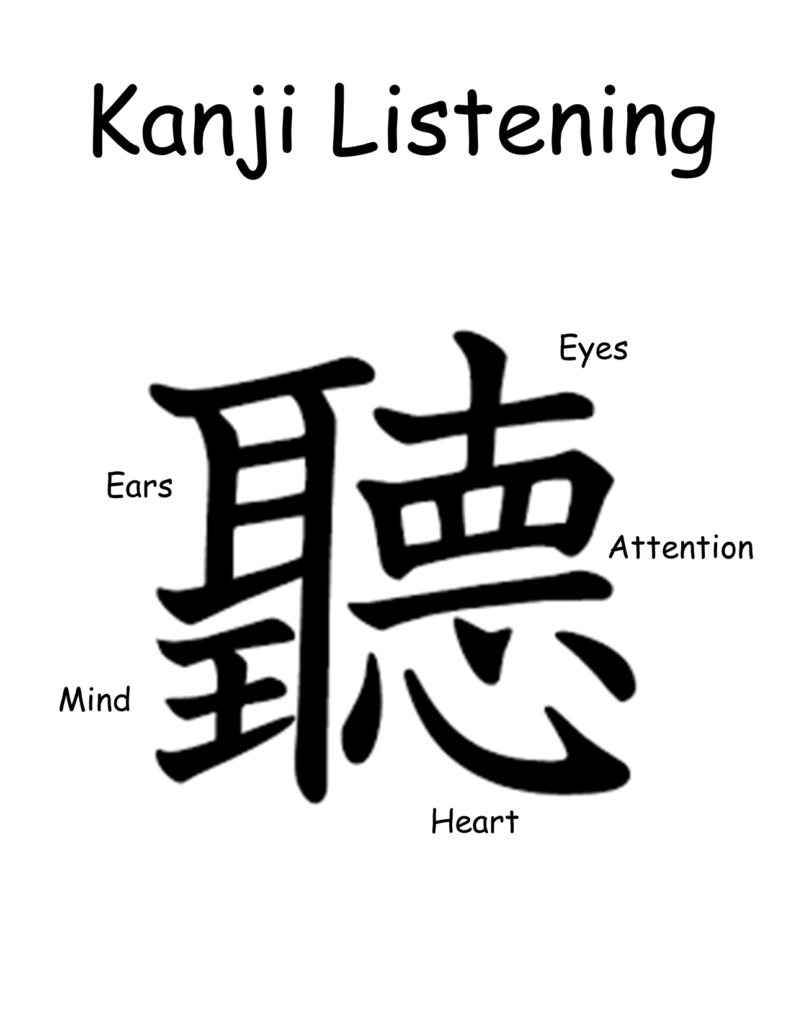
Self PeaceDNA (your P2PConflict with others)

Summary
PeaceDNA is a quick and easy ‘what to do’ guide to assist you in dealing with P2PConflicts even if the other person is unaware of it. Judging if the Conditions are in place by what you see and hear, asking Position POV GQs (Facts, Feelings & Opinions) and then connecting them with a Rephrase Question to confirm is paired with an “I feel…when you…because….” The Remedy is created by hearing and expressing what is wanted and what each person will do. This is the PeaceDNA essential step path or map for reaching Peace Agreement.
Additionally, the unique FOUL Buster skills set makes fast and respectful work of offensive remarks and distractions, even if not doing ‘Conflict Resolution’. The talking peace skills are clear, simple, and use the natural language of the particular speaker as appropriate. That means you use whatever words you want in order to answer the Guiding Questions (GQ).
Skills Set
- Respectfully challenge and handle disrespectful words with FOUL Buster; both Simple FOULs & Faux Fact FOULs.
- KANJI Listen means to ‘read between the lines’ using your eyes, your attention, your heart and your mind to truly listen.
- Rephrasing for “Yes” is a respectful way to create agreement, even if unwitting. (“Are you saying..?”). Also building trust and rapport.
- Basic Body Language (for self) is to watch for signs of aggression such as posture, breathing, voice tone & tempo. Include awareness checks of physical distance, hand positions, and energy levels.

PeaceDNA in your Community (Teaching Others)
You have the opportunity to make a difference! By acting as PeaceDNA Ambassador, you can use a variety of free resources, including self-directed YouTube video lessons, PDF posters, activities, and more. Additional resources include the Safe Defense YouTube video curriculum with PeaceDNA Teaching Tips and Tricks. Also, for anyone, an online Google ‘Program Completion’ quiz, and (with 90% or higher), a PeaceDNA diploma (pdf).
As a PeaceDNA Ambassador, your role involves gathering a small group of 6-20 people to watch the 7 You Tube lessons over several weeks and, after each, discuss group ideas. Each 60-minute group meeting, you’ll watch 2-3 videos and, in between each, engage in group discussions about the specific lesson watched. The Ambassador (you) asks the group suggested de-brief questions (provided).
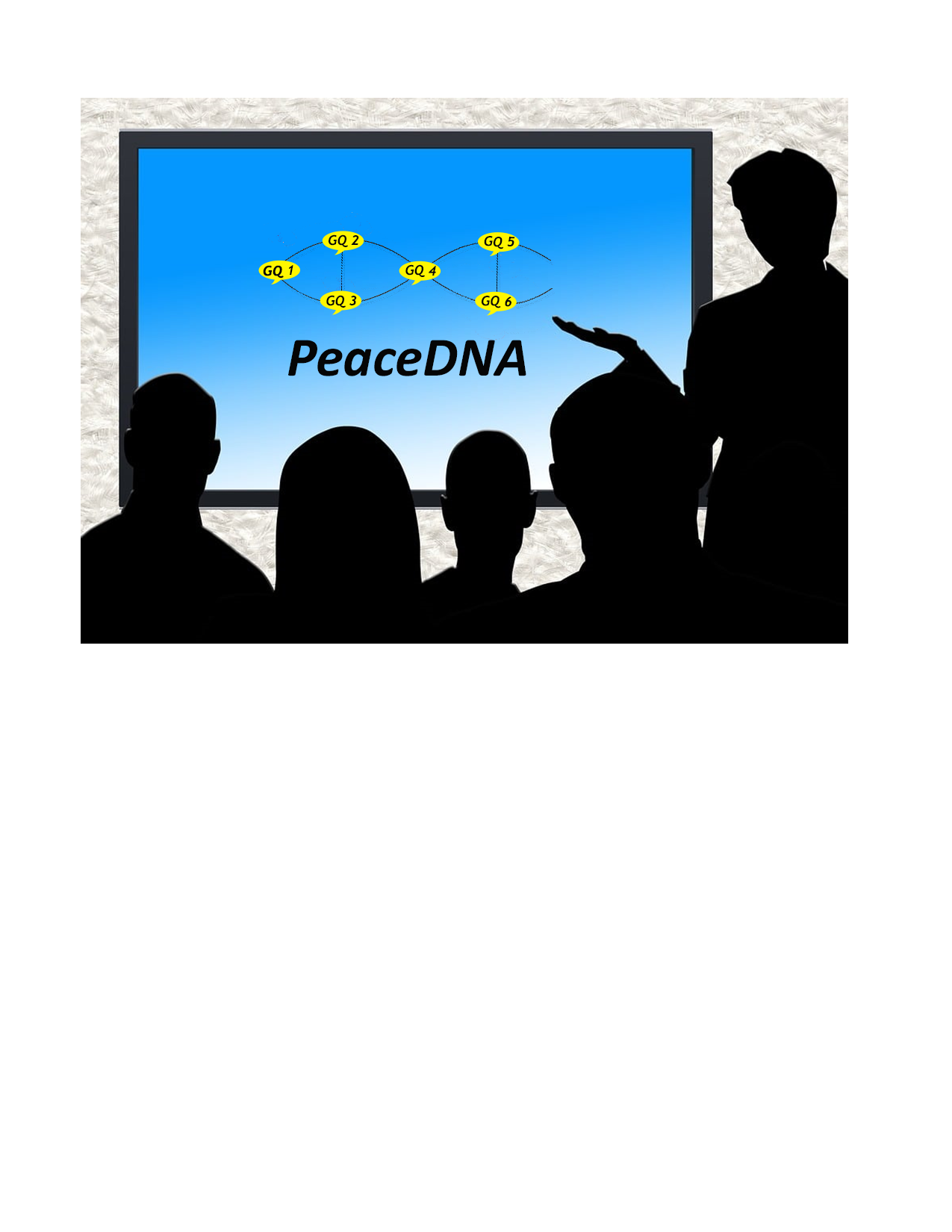
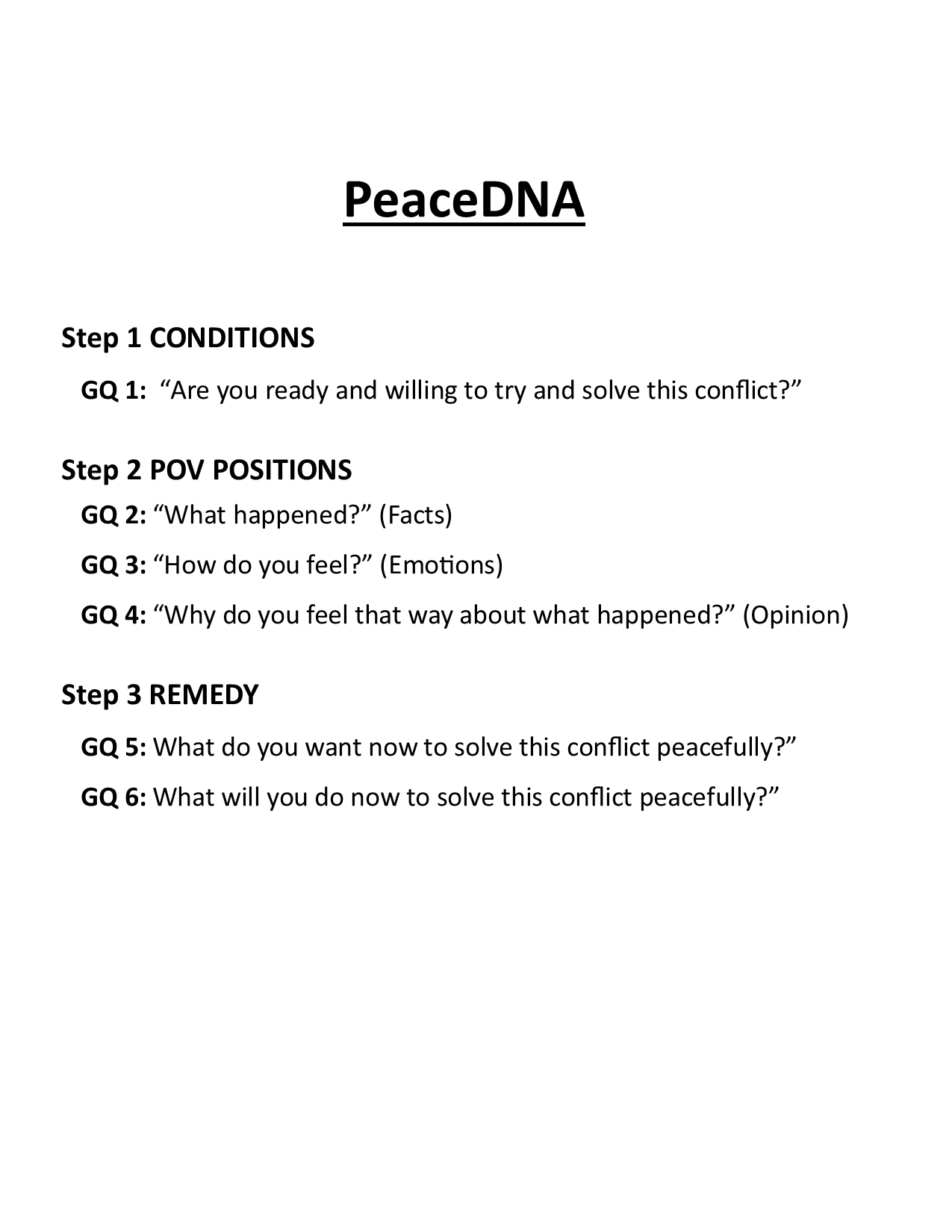
Proudly powered by WordPress